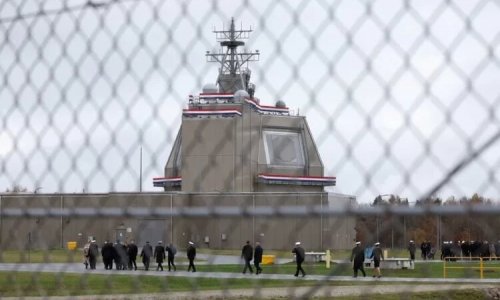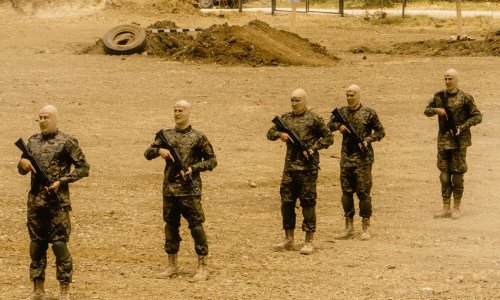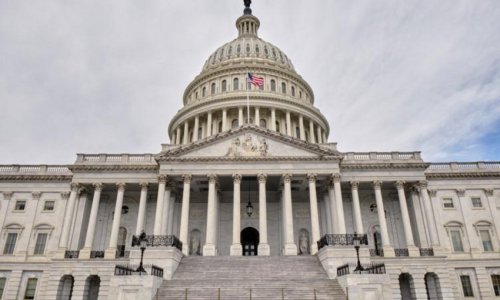Across the other side of the world, in the city planning office of Cupertino, California, the latest images have been revealed of what is taking shape behind these mysterious obscured windows: designs for the gleaming silver doughnut of the new Apple headquarters by Norman Foster.Outline plans of the hallowed O were first unveiled in 2011, showing a shimmering circle nestling in a sea of endless trees, as if a flying saucer had just landed in Yosemite National Park. Behind its sleek, curving walls, it was promised to house “a serene environment, reflecting Apple’s brand values of innovation, ease of use and beauty.”“We have a shot,” proclaimed Steve Jobs, in front of the Cupertino planning committee, in what would turn out to be his last public appearance, “at building the best office building in the world. I really do think that architecture students will come here to see it.”So how is the promised place of pilgrimage turning out?The latest images reveal quite how much of an Apple product the $5bn complex will be. While the climbing walls and mini-golf courses of Google's offices might embody the company's anything-goes karma, their buildings are not literally made of primary-coloured blobs or cartoonish toolbar icons. The Apple mothership, on the other hand, looks like it could be built out of the stuff of computers itself. It's as if Jonathan Ive, in a moment of madness, had unscrewed all the polished parts of his iPhones, iMacs and Macbook Pros and refashioned them in a great big circle.At the gaping triple-height entrance, through which the 13,000 employees will file, soaring columns will rise through the triumphal portal in the same brushed-aluminium finish as a Macbook. Others who arrive by bus will enter up a grand imperial staircase, whose whiter-than-white handrails are chamfered with the same radius as the curved corners of an iPad. The floors appear on the facade as sharply tapering fins, hovering around the building like the rings of Saturn, made of white back-painted glass – just like the back of the white iPhone.With month-long agonies over the whiteness of white, the development of Apple Campus 2 has come under a level of scrutiny unknown to even the most finicky of Foster projects. Before he died, Jobs was adamant that the building's materials be closer to the kind you would find on an Apple product than a standard building, insisting on gaps between panels no greater than 1/32 inch (0.8mm), compared to the standard 1/8 inch (3mm). It promises to be a strangely seamless spatial experience, interiors conceived like the airtight cabins of aeroplanes or cars, with few joints in sight.“We were printing out drawings at bigger-than-lifesize scale,” recalls one architect. “There was a debate over whether a particular gap should be 3mm or 5mm, a level of detail most clients would never even consider – or be able to see.”But, with its x-ray vision for detail, Apple is clearly like no other client on earth.“The building is pushing the boundaries of technology in almost every aspect,” says senior Foster architect Stefan Behling. “The glazing is a completely new system that's never been done before,” he says, referring to the 12m-high concave sheets of glass for the main facade being manufactured in Germany, the biggest of their kind ever made. “Everything is handcrafted for this project.”But in the desperate pursuit of innovation, is the building in danger of being nothing more than a machismo monument to technocratic supremacy?“It's a very macho exercise,” says the former Foster employee. “It's all men, and it's all about big egos. The biggest piece of glass, the biggest canteen in the world; everything has to be biggest and best.”The superlatives extend to the building's green credentials, championed by Apple's environmental director, Lisa Jackson, who formerly headed the Environmental Protection Agency for the Obama administration. “80% of the site will be green space,” she beams in the promotional video for the project. “75% of the year we won't need air-conditioning or heating. We'll have natural ventilation,” she adds, rolling off a dizzying barrage of statistics. “It will run on 100% renewable energy, with one of the largest solar arrays in the world for a corporate campus.”And what a campus it will be. The 176-acre (71-hectare) plot looks set to put the Garden of Eden to shame, its copious fields planted with 7,000 trees – cherries, plums, apricots, persimmons, and of course, apples – all co-ordinated by none other than Apple's “Senior Arborist”, David Muffly.“The idea is to bring California back to Cupertino,” he says, describing how the planting will follow Jobs' desire to see something resembling the verdant campus of Stanford brought to what is currently a tarmacscape of car parking and out-of-town sheds.Golden-hued images show young Apple apostles striding through what look like fields of wheat on their way to a presentation at the auditorium, a mini-me circular glass pavilion that rises out of the ground in a corner of the campus, topped with its own sleek metallic disc. In this crystal UFO, excited press will gather, before descending into an underground chamber where seating for 1,000 awaits, to be dazzled by momentous multimedia product launches.With their sun-saturated glow, these pastoral scenes conjure a surreal techno-bucolic bliss. The circular temples, with their barely-there walls, stand in the landscape like future-primitive huts, where a 21st-century Walden might take refuge. You expect to find disciples of the Apple cult nestled among the bluebells with their iPads, lost in an arcadian reverie.So why the circle?“It started off as a much more organic blob,” says an architect who worked on the project. “But it slowly got less blobby – it wasn't smooth enough for Steve.” As a metallic doughnut, it has echoes of the GCHQ building on the outskirts of Cheltenham, and no doubt Apple will be trying to keep what goes on inside just as secret.According to Peter Oppenheimer, Apple’s chief financial officer, the circle form is all about workflow. “We found that rectangles or squares or long buildings or buildings with more than four stories would inhibit collaboration,” he told the San Jose Mercury. “We wanted this to be a walkable building, and that’s why we eventually settled on a circle.”Or maybe it's because Apple Campus 2 is actually a spaceship, set to launch on persimmon-powered rocket fuel, off to boldly go and sell iPads where no man has gone before.(theguardian.com)ANN.Az
Norman Foster's $5bn Apple HQ revealed - VIDEO
World
19:28 | 15.11.2013

Norman Foster's $5bn Apple HQ revealed - VIDEO
On the third floor of an innocuous office building in southwest London, flimsy sheets of tracing paper are taped to the windows, leaving only an inch gap to glimpse the real world outside. Rolls of drawings are hurriedly dispatched, unmarked boxes carried up in the secure, swipe-card lift. Tired architects drift in and out at unusual times of day and night, forbidden from uttering a word of what lies beyond the doors.
Follow us !










